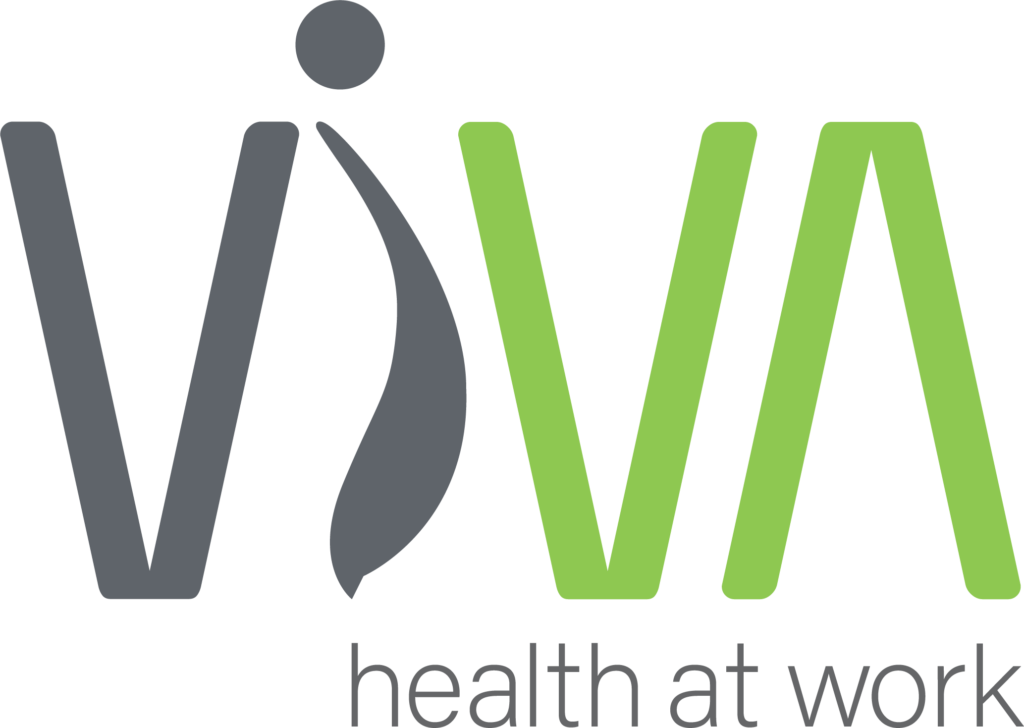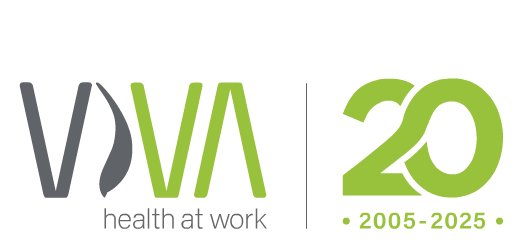Human-centred design, or design for diversity, is an approach to achieve social justice. So, too, ergonomics (a practice underpinning human-centred design) is a process, not a product[i]. The conditions in which design may best occur include supportive leadership (in a compelling and pervasive manner) with methods to engage effective and transparent decision-making[ii]. Systems must be established to engage workers and maintainers in design-conversation. The goal is to facilitate their involvement in developing solutions to design work that achieves constructive outcomes (via task re-design and/or predictive analysis and design of work flow or interface with equipment or tools and environmental conditions). An organisation well versed in these practices likely manages a detailed task-based library to identify hazards and design opportunities that are contextualised to work[iii], [iv], [v]: general hazard registers are typically diluted and not adequate to support these processes. Knowledge is anchored by a comprehensive understanding of human tasks, population of workers (current and targeted), and conditions of work. Positive health outcomes and productivity improvement (following design intervention) should occur and be measured. Regular project evaluation will determine veracity of design objectives and fidelity of results. Cost-benefit analysis and calculation of return on investment is common practice in an enterprising human-centred organisation, reflecting business unit integration and intelligence[vi]. Through these practices, an intention is expressed to provide business cases that support ongoing practices. These are not the only measures because elements of workforce engagement, satisfaction, psychological safety, and happiness are important also. Typically, in a human-centred organisation, the ratings from these measures will be high and, overall, standards will reflect that of a high-performing business (e.g. ISO 27500: 2016: A Human-Centred Organisation)[vii].

It is the process of design and the strategies required to embed design-thinking in an organisation that interested me to pursue my PhD thesis, “Good work design: Strategies to embed human-centred design in organisations”[viii]. Aside from the myriad of important physical benefits associated with participative ergonomics (e.g. Burgess-Limerick, 2011)[ix], the opportunities for improved cognitive performance, emotional well-being, sustainability, and organisational resilience were curious to me. It is known that work provides a means to promote health and well-being[x], [xi], [xii]; [xiii], and having a voice in the design of one’s work leads to self-efficacy, engagement, a sense of meaning at work, improved communication, and positive morale[xiv], [xv], [xvi], [xvii]. However, few organisations engage a broad perspective to associate health and well-being with their own organisational drivers – job design and role assignment, leadership, reward, and the underpinning work climate. In fact, when workplace health or wellness programs are ad-hoc, not integrated with business strategy, and adopt only a lifestyle perspective, they do little to address headline causes of absence: e.g. workplace stress and anxiety, mental health overall, critical events resulting in death or disability, and musculoskeletal disorders[xviii]. The premise of Total Worker Health® initiatives are to provide for integrated health hazard protection and promotion of well-being so that the efforts are targeted and strategic[xix]. The concept of work as health, an elixir (or prescription) for health and well-being (when well designed), is novel.
Design that is iterative means that, at times, solutions will be unclear and ill-formed (a work-in-progress) and mistakes may be made: the question, then, is whether organisations have the risk tolerance for delays and iterative design process where unknown benefits may flow without a structured timeline? Will workers feel protected in a climate of adequate psychological safety to present their ideas without fear of ridicule or reprimand if the solutions arising are not immediate, of great effect, and readily achievable? Will the workplace be tolerant of all dimensions of work (work as done, imagined, prescribed, and disclosed, with congruence or lack thereof)[xx] to have a genuine discussion about work design improvement? A gamble, yes, but the evidence strongly supports the association between high-performing organisations and their embrace of diverse thinking and human-centred design strategies (e.g. ISO 27500: 2016: A Human-centred organisation[xxi], or the program success at Rio Tinto Weipa[xxii]).
Self-Sacrifice as Part of One’s Mantra: The Caring Professions
Productivity, health, happiness, and social connectivity are attributes of ideal working conditions. Workers are most satisfied when they experience a sense of control, job security, adequate workload, and a sense of flexibility in their schedule[xxiii]. However, in the caring professions, such as health care or education, self-sacrifice is indicative of the work culture. Workers in these industries are at risk for burn-out, stress, anxiety, poor performance, work dissatisfaction, isolation, and injury or poor health conditions[xxiv], [xxv], [xxvi], [xxvii]. The Australian Work Health and Safety Strategy 2012–2022 has identified the health care and social assistance industry as a priority to reduce the high number and rate of work-related injuries and illnesses. Since 2009 – 10, this industry has the highest number of claims among all Australian industries. The industry comprises ambulatory health care services, hospitals, nursing and residential care facilities, and social services. The health care industry employs 12% of the workforce in Australia yet accounts for 16% of serious workers’ compensation claims for 2014 – 2015. Since 2003, 35 fatalities have been reported. In FY2001 to FY2015, body stressing claims (musculoskeletal disorders) represented more than half (51%) of workers’ compensation claims; slips, trips, and falls accounted for 19% of claims (such as falling over objects in high traffic areas or stair incidents), and mental stress accounted for 8% of the claims[xxviii].
Health care and education represent people-intensive, -centred, and -driven characteristics[xxix]: there is heavy reliance on the use of self as a therapeutic or educational tool for clients or students, the work is physically demanding and busy with constant interruptions while procedures occur at fast-pace (so human movement and cognitive demands are high), and the regulatory framework is intensive and, as such, organisational strategies are mired in layers of compliance-based administrative work. Unanticipated and unexpected events are regular occurrences[xxx], [xxxi]. These features create a complex system from which it is difficult to employ a single intervention that will result in remarkable change. A multi-factorial, systems-based strategy is required to improve human performance in these industries.
Given that collaborative practices are fundamental to participative ergonomics, the very nature of the user (self-sacrificial) and their job demands (time pressures in a dynamic and changing environment) in these industries means that it is a challenge to secure input from subject matter experts[xxxii]: they (and their organisations) need to value themselves, workers, as important and worthy of self-care and they require time and space to contribute to design strategies. The regulatory push, also, is based on patient/client or student care, and less so on worker well-being (although this may be changing, e.g. per the Australian Work Health and Safety Strategy 2012–2022) [xxxiii]. It may be that strategies that achieve dual or multiple outcomes, also focused on end user care (patient/client or student) and the human input driver of this care (teacher, administrator, maintainer, or health care practitioner), will be a popular approach. For example, colonoscopy procedures underpinned by quality training for competency can be enhanced through a human factors approach[xxxiv], with an assumption that improved understanding of cognitive, perceptual, and motor demands of surgeons will enhance competency frameworks and lead to better surgical outcomes, with a more satisfying, less stressful experience for the health care team (less risk for blame for “human error”). Similarly, educational frameworks indicate design development per a human factors and ergonomics approach (in all but name)[xxxv]. A human factors approach to training suggests that mentoring by experienced workers with a “story board” of contextualised incident review enhances the educational experience of new recruits to prepare for real-world work[xxxvi] (and recognises the skill-set and experience of mature workers). Much research has been undertaken in terms of patient care handling: improvements in manual tasks, including patient handling, resulting in improved work health safety for carers but also a likelihood for safe care for patients through improved handling techniques, methods, and equipment[xxxvii]. So, too, early childcare educators are exposed to musculoskeletal disorders arising from the handling of pre-school aged children[xxxviii].
Too often, workplaces investigate adverse events and “root causes” laying blame for “human error” as a conclusion to their findings[xxxix]. If we were to adopt a human-centred approach, the terminology would be updated to reflect compassionate understanding and appreciation of a complex work system, e.g. “mishaps and unintended or detrimental consequences of human work (system variability)”[xl]. This framework leads to design strategies to improve a system and recognition that an unintended consequence is the beginning of an investigation, not the conclusive end[xli]. A human factors approach leads to the development of technology to help improve system performance, such as correct administration of medications in a health care setting via mobile, point-of-care systems (e.g. MedLink)[xlii].
The Nexus Between Good Work Design (i.e. Human-Centred) and Well-Being
When we design for diversity in the organisational, cognitive, and physical work realm of operators, maintainers, management/leaders, administrators, and other such stakeholders (contract suppliers, customers, and industry at large), our approach becomes human-centred. Participative and collaborative physical and environmental task design strategies are recognised as a method of engaging workers, increasing communication, providing for team problem solving and innovation, and essentially providing a forum for cross-over in the realm of psychological interventions (well-being and health) as well as productivity and performance. The medium is furnished by the investigation and design of meaningful daily tasks of workers and, as has been presented, training, learning, and development methods are enhanced through a human-factors approach also.
The ISO 27500:2016 provides these recommendations for a human-centred organisation[xliii]:
- Capitalize on individual differences as an organizational strength (design for diversity)
- Make usability and accessibility strategic business objectives
- Adopt a total system approach
- Ensure health, safety, and well-being are business priorities
- Value personnel and create meaningful work
- Be open and trustworthy
- Act in socially responsible ways
To demonstrate performance in good work design, organisations should employ methods to describe tasks required of workers and contextualised hazards with an understanding of the interaction of risk factors. They should integrate design strategies (e.g. a blend of targeted structural design with well-being and health interventions, per the teachings of Total Worker Health®[xliv]), and actively work on task (re)design or predictive design (workforce strategy and recruitment strategies combined with an active and constructive approach to design equipment, tools, environmental exposures, and work demands to best suit and fortify that strategy).
In conclusion, it is important to recognise that health, through good work design, may extend beyond that of individual workers to the health of team dynamics and the organisation, its good will and reputation, social justice, sustainability practices, quality management, and business objectives. Special challenges may arise in the caring professions, but intervention is particularly important for the well-being of our health care workers and educators: strategies may need to be creatively deployed in these industries.
[i] Hedge, A., & Pazell, S. (2016). Chapter 21: Ergonomics and wellness in workplaces, Part 3: Emerging ergonomic workplace design issues, In Hedge, A. (Ed.). Ergonomic Workplace Design for Health, Wellness, and Productivity. CRC Press: Florida.
[ii] Pazell, S (unpublished thesis, submitted for examination May 2018): Good work design: Strategies to embed human-centred design in organisations. University of Queensland: Sustainable Minerals Institute.
[iii] Burgess-Limerick, R., Joy, J., Cooke, T., & Horberry, T. (2012). EDEEP – An innovative process for improving the safety of mining equipment. Minerals, 2, 272 – 282
[iv] Horberry, T., J., Burgess-Limerick, R., & Steiner, L. J. (2011). Human Factors for the Design, Operation, and Maintenance of Mining Equipment. Boca Raton, FL: CRC Press.
[v] Stanton, N. A. (2006). Hierarchical task analysis: Developments, applications, and extensions, In Applied Ergonomics, 37, 55 – 79.
[vi] Pazell, S (unpublished thesis, submitted for examination May 2018): Good work design: Strategies to embed human-centred design in organisations. University of Queensland: Sustainable Minerals Institute.
[vii] International Standards Organisation (ISO) (2016). Human-Centred Organisations. ISO Standard 27500:2016.
[viii] Pazell, S (unpublished thesis, submitted for examination May 2018). Good work design: Strategies to embed human-centred design in organisations. University of Queensland: Sustainable Minerals Industry.
[ix] Burgess-Limerick, R. (2011). Ergonomics for Manual Tasks. In CCH Australia Ltd., Australian Master OHS and Environment Guide. Pp. 261 – 278. McPherson’s Printing Group.
[x] Australasian Faculty of Occupational & Environmental Medicine (AFOEM): Royal Australasian College of Physicians (30 Mar 2011). Australian and New Zealand Consensus Statement on the Health Benefits of Work. Position Statement: Realising the Health Benefits of Work. Australia & New Zealand: AFOEM.
[xi] Hammer, L., B., & Sauter, S. (2013). Total Worker Health and Work-Life Stress. Journal of Occupational and Environmental Medicine, 55(12), 651 – 658.
[xii] Robert Wood Johnson Foundation (RWJF) (2010). A new way to talk about the social determinants of health. Viewed 13 October 2015: http://www.rwjf.org/content/dam/farm/reports/reports/2010/rwjf63023
[xiii] Waddell, G. & Burton, K. A. (2006). Is Work Good for Your Health and Well-Being?: London, UK: TSO.
[xiv] Burgess-Limerick, R. (2018). Participatory ergonomics: Evidence and implementation lessons. Applied Ergonomics, 68, 289 – 293. https://doi.org/10.1016/j.apergo.2017.12.009
[xv] Laing, A. C., Cole, D. C., Theberge, N., Wells, R. P., Kerr, M. S., & Frazer, M. B. (2007). Effectiveness of a participatory ergonomics intervention in improving communication and psychological exposures, In Ergonomics, 50, (7), 1092 – 1109.
[xvi] Laitinen, H., Saari, J., Kivist, M., & Rasa, P-L. (1998). Improving physical and psychological working conditions through a participatory ergonomic process: A before-after study at an engineering workshop, In International Journal of Industrial Ergonomics, 21, 35 – 45.
[xvii] Lallemand, C. (2012). Contributions of Participatory Ergonomics to the Improvement of Safety Culture in an Industrial Context. Work, 41, 3284 – 3290.
[xviii] Karanika-Murray, M., & Weyman, A. K. (2013). Optimising workplace interventions for health and well-being, In International Journal of Workplace Health Management, 2, (6), 104 – 117. http://dx.doi.org/10.1108/IJWHM11-2011-0024.
[xix] Centers for Disease Control (CDC). (2016). What is Total Worker Health®? CDC: NIOSH: (accessed 8 December 2016). https://www.cdc.gov/niosh/twh/
[xx] Sharrock, S. The varieties of human work. Safety Differently. http://www.safetydifferently.com/the-varieties-of-human-work/
[xxi] International Standards Organisation (ISO) (2016). Human-Centred Organisations. ISO Standard 27500:2016.
[xxii] Pazell, S., Burgess-Limerick, R., Horberry, T., Dennis, G. Wakeling, C. (2016). RIO TINTO WEIPA: The Value Proposition of Good Work Design. In Health, Safe and Productive by Design. Proceedings of the 51st Annual Conference of the Human Factors and Ergonomics Society of Australia. 6-9 November, Gold Coast, Queensland
[xxiii] Thomas, W., Colligan, M. S. W., & Higgins, E. M. (2006). Workplace stress. Journal of Workplace Behavioural Health, 21(2), 89-97, DOI: 10.1300/J490v21n02_07.
[xxiv] Lloyd, M. E. L., & Sullivan, A. (2012). Leaving the Profession: The context behind one quality teacher’s professional burn out. Teacher Education Quarterly, 39(4), 139 – 162.
[xxv] Pucella, T. J. (2011) The impact of national board certification on burnout levels in educators. The Clearing House: A Journal of Educational Strategies, 84(2), 52-58, DOI: 10.1080/00098655.2010.511306.
[xxvi] Safe Work Australia (2017).Health Care and Social Assistance. https://www.safeworkaustralia.gov.au/industry_business/health-care-and-social-assistance
[xxvii] Seifert, K., Jayaratane, S., & Chess, W. A. (1991). Job satisfaction, burnout and turn over in health care social workers. Health and Social Work, 16(3), 193 – 202.
[xxviii] Safe Work Australia (2017). Health Care and Social Assistance. https://www.safeworkaustralia.gov.au/industry_business/health-care-and-social-assistance
[xxix] Carayon, P., Alyousef, B., & Xie, A. (2012). Human factors and ergonomics in health care. Chapter 57, Salvendy, G. (Ed.), Handbook of Human Factors and Ergonomics (4th Ed.). Hoboken, NJ: John Wiley & Sons, Inc.
[xxx] Carayon, P., Alyousef, B., & Xie, A. (2012). Human factors and ergonomics in health care. Chapter 57, Salvendy, G. (Ed.), Handbook of Human Factors and Ergonomics (4th Ed.). Hoboken, NJ: John Wiley & Sons, Inc.
[xxxi] Hignett, (2003). Hospital ergonomics: A qualitative study to explore the organizational and cultural factors. Ergonomics, 46(9), 882–903.
[xxxii] Carayon, P., Alyousef, B., & Xie, A. (2012). Human factors and ergonomics in health care. Chapter 57, Salvendy, G. (Ed.), Handbook of Human Factors and Ergonomics (4th Ed.). Hoboken, NJ: John Wiley & Sons, Inc.
[xxxiii] Safe Work Australia (2017). Health Care and Social Assistance. https://www.safeworkaustralia.gov.au/industry_business/health-care-and-social-assistance
[xxxiv] Zupanc, C. M., Burgess-Limerick, R., Hill, A., Riek, S., Wallis, G. M., Plooy, A. M., Horswill, M. S., Watson, M. O., & Hewett, D. G. (2015). A competency framework for colonoscopy training derived from cognitive task analysis techniques and expert review. BMC Medical Education, 15(216), 1 – 11. DOI 10.1186/s12909-015-0494-z
[xxxv] Smith, T. J. (2013). Designing learning environments to promote student learning: Ergonomics in all but name. Work, 44, 39 – 60. DOI 10.3233/WOR-121493
[xxxvi] Shanmugam, A., & Robert, T. P. (2015). Human factors in training for aircraft maintenance technicians. Proceedings of the 19th Triennial Congress of the International Ergonomics Association, Melbourne, VIC, 9 – 14 August 2015.
[xxxvii] Wilson, T. P., & Davis, K. G. (2016). Health care ergonomics: Contributions of Thomas Waters. Human Factors, 58(5), 726 – 747. DOI: 10.1177/0018720816648553
[xxxviii] Hsin-Yi, K., C., Chen-Yi, C., & Yan-Ying, J. (2013). Work-related musculoskeletal disorders and ergonomic risk factors in early intervention educators. Applied Ergonomics, 44, 134 – 141.
[xxxix] Ottewill, M. (2003). The current approach to human error and blame in the NHS. British Journal of Nursing, 12(15), 919 – 924. https://doi-org.ezproxy.library.uq.edu.au/10.12968/bjon.2003.12.15.11419
[xl] Pazell, S. (2018). Anecdote and personal communication during the Human Factors Design for Diversity workshop hosted by the Earth Moving Equipment Safety Round Table, University of Queensland, Sustainable Minerals Institute.
[xli] Burgess-Limerick, R. (2018). Anecdote and personal communication during the Human Factors Design for Diversity workshop hosted by the Earth Moving Equipment Safety Round Table, University of Queensland, Sustainable Minerals Institute.
[xlii] Medlink, Humanscale: https://www.humanscale.com/products/product.cfm?group=MedLink
[xliii] International Standards Organisation (ISO) (2016). Human-Centred Organisations. ISO Standard 27500:2016.
[xliv] Anger, W. K., Elliot, D. L., Bodner, T., Olson, R., Rohlman, D., Truxillo, D. M., Kuehl, K. S., and Hammer, L. B. (2015). Effectiveness of Total Worker Health Interventions. Journal of Occupational Health Psychology, 20(2), 226 – 247.

